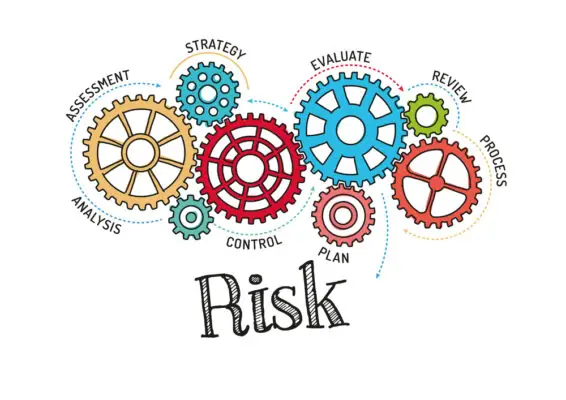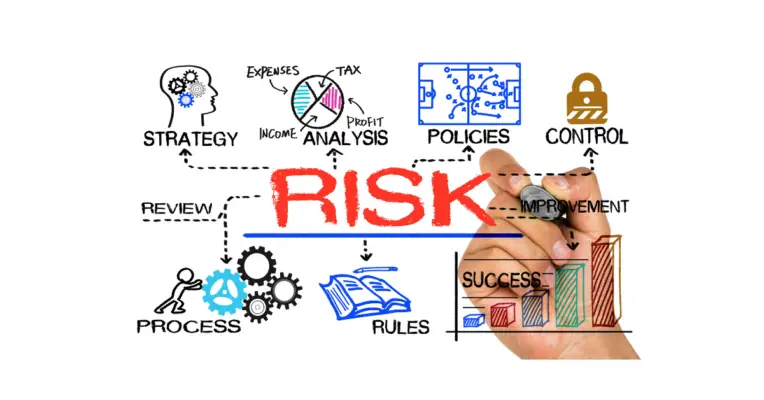If you work in the criminal justice system, you will likely need to use an offender risk assessment template. Offender risk assessments are important tools that help professionals make informed decisions about offenders.
An offender risk assessment predicts an offender’s likelihood of re-offending. Risk assessments are based on research and data, considering factors such as age, criminal history, and family history. Professionals in the criminal justice field use offender risk assessments to make decisions about offenders, such as whether or not to release them from custody.
You can use an offender risk assessment template in a few different ways. The first way is to use the template as a guide when conducting your own assessment. The second way is to use the template as a starting point for creating your own custom assessment. The third way is to use the template as a reference when you are reviewing an offender’s file.
Which method you choose will depend on your needs and preferences. If you are new to conducting risk assessments, you may find using the template as a guide helpful. If you have more experience, you can create your own custom assessment.
Regardless of which method you choose, consider all the factors listed in the template so that you can make an accurate assessment.
This blog post will provide an overview of offender risk assessments and how to use an offender risk assessment template.

Importance of an Offender Risk Assessment tools
An offender risk assessment is an important tool for criminal justice professionals. It allows them to collect and analyze data about offenders to make predictions about future behavior. Additionally, risk assessments can be used to tailor rehabilitation and treatment programs to the needs of individual offenders.
There are many different ways to perform an offender risk assessment. The method used will often depend on the specific goals of the assessment, as well as the resources and time available.
- The main purpose of risk assessment tools is to help criminal justice professionals make more informed decisions about how to manage offenders, including decisions about bail, release, and supervision.
- Risk assessment tools can help identify which offenders are most likely to reoffend and pose a danger to the community.
- Offenders who are assessed as being high risk can be more closely monitored and managed in the community, while those who are assessed as being low risk can be released sooner or have fewer restrictions placed on them.
- It is important to note that risk assessment tools are only one factor that should be considered when making decisions about an offender’s management; other factors include the severity of the crime in the criminal justice system.
Some common steps are often involved in most Risk Assessments
1. Identifying the Offense Category
The first step is to identify the broad category of offense that the offender has been convicted of. This will help narrow down the focus of the assessment and ensure that only relevant information is considered. Low-risk offenders can be offered community supervision punishment.
For example, suppose the offender has been convicted of a violent crime. In that case, data about their prior history of violence will be more important than their prior history of drug use.
2. Collecting Prior History Information
The next step is to collect information about the offender’s prior history. This may include criminal history, family history, education history, and employment history. The goal is to identify patterns or trends that may predict future criminal behavior.
3. Identifying Risk Factors
Once all relevant information has been collected, it can be analyzed to identify any present risk factors. A risk factor is anything predictive of future criminal behavior. Some common dynamic risk factors include drug abuse, mental illness, unemployment, and prior criminal convictions.
4. Calculating the Risk Score
Once all relevant risk factors have been identified, they can be used to calculate a numeric risk score. This score can then be used to compare offenders against one another and predict who is most likely to commit future crimes.
There are many different ways to calculate a risk score, but one common method is to give each risk factor a numerical value (e.g., 1 point for each prior conviction) and then add up all the points to get a total score.
5. Making Recommendations Based on the Risk Score
Finally, once a numeric risk score has been calculated, recommendations can be made based on that score. For example, offenders with a high-risk score may be flagged for closer supervision by law enforcement, while those with a low-risk score may be candidates for early release from prison or probation.
The AO has developed post-conviction risk assessments (PCRAs) as part of its effort to improve post-conviction supervision effectiveness. This new program allows officers to target the people at risk of not performing well and commiting new crimes.
The US prison probation system employs evidence-based practices (EBPs) using the best available data and science influencing decision-making. The evidence-based approach uses the PCRA for a maximally measurable reduction in recidivism.

Instruments for Risk Assessment Tools
The Offender Risk Assessment Template utilizes a variety of assessment instruments to assess an individual’s risk for future violent or criminal behavior. These instruments include Static 99, which evaluates past criminal history and demographics, and the HCR-20, which considers factors such as psychiatric history and relationships with others.
In addition, the template incorporates an officer’s professional judgment in evaluating risks and determining an appropriate supervision plan. By utilizing a combination of established instruments and experienced subjective assessments, the Offender Risk Assessment Template strives to evaluate individuals’ risk for future offending accurately.
The Psychopathy Checklist-Revised (PCL-R) and the HCR-20 assess psychopathic traits, while the Level of Service Inventory-Revised (LSI-R) evaluates criminogenic needs and risk factors. In addition, the Violence Risk Appraisal Guide (VRAG) can provide insight into the potential for future violent behavior.
These instruments can be used in combination with demographic or criminal history information, clinical interviews, and collateral sources to determine a comprehensive risk profile for an offender
Risk evaluation instruments based upon several research studies follow released sexual offenders. This factor has been statistically weighed. Typically the Static99R is a popular instrument.
Numerous studies have proven their predictability. In most instances, the alleged sexual offender’s reoffense rates range from 4% and 13% over the 5 years from release from custody to 5-22% over the following 5 years.
JSORRAT-II (Juvenile Risk)
The Juvenile Sexual Offence Recidivism Risk Assessment Tool II (JSORRAT-II) is an empirically derived 12-point actuarial risk assessment tool for adolescents ages 12-18. It aims to develop empirically-based estimations regarding the potential risk of future sexual offenses in juvenile justice for previously alleged crimes.
JSORRATI-I was based on 9636 men convicted of sexual offenses and verified on 5938 boys in Utah and 527 in Iowa.
One benefit is its validity, as it has been tested with a diverse population and shown to have high predictive accuracy. Another advantage is its versatility, as it can be used at multiple points in the criminal justice system (intake, sentencing, probation) for both short-term and long-term risk prediction.
The JSORRAT-II includes rehabilitation recommendations based on the offender’s specific risk level and needs. Overall, the JSORRAT-II provides a useful tool for assessing risk in juvenile offenders and informing rehabilitation plans.
However, the tool has significantly biased against certain racial and ethnic groups. Studies have also found gender discrepancies in the assessments, with female offenders being labeled as high-risk more often than their male counterparts.
Another disadvantage of the JSORRAT-II is that it does not consider factors such as family dynamics and substance abuse issues, which can significantly affect offending behavior. While the JSORRAT-II may be helpful in some cases, it is important to use caution when relying solely on this assessment tool, as it may result in unfair treatment of certain individuals.

STATIC-99R (STATIC RISK)
The Static 98R uses static and non-changing risk factors to predict an individual’s likelihood of committing sexual aggression and being a sex offender. The state of California authorized the risk assessment tool as the first instrument to assess all convicted sexual assaults and other crimes in California. The data show the Inter-Rate reliability of the instrument in California is high.
One advantage of this tool is its reliability – research has consistently shown high inter-rater and test-retest reliability. In addition, it has demonstrated predictive validity in multiple studies with diverse samples.
Another advantage is its ease of administration – it can be completed with or without access to a sex offender’s complete file and typically only takes 15-20 minutes. The STATIC-99R is a well-researched and reliable tool for assessing the risk of sexual recidivism in sex offenders.
The STATIC-99R, a tool used for assessing the risk of sexual recidivism in offenders, has come under criticism for several reasons. First, it cannot be used with certain populations, such as individuals under 18 or over 60.
Additionally, it does not consider important factors like substance abuse and previous criminal behavior outside sex offenses. It also lacks cultural competence and may overestimate the risk level for non-white offenders.
Finally, its predictive accuracy decreases significantly after five years, and it does not consider any interventions or treatment the offender may have completed. While the STATIC-99R can still be a useful tool in evaluating risk, it is important to consider its limitations and use it alongside other assessment methods.
Conclusion:
Risk assessments are important tools for criminal justice professionals because they allow them to collect and analyze offenders’ data to predict future behavior. There are many different ways to perform an offender risk assessment, but most will involve collecting information about the offender’s prior history and identifying relevant risk factors. Once all relevant information has been collected, it can be used t make recommendations about how best to deal with the offender. Sentenced. When used correctly, risk assessments can help keep communities safer by identifying potential threats before they have a chance to offend again.
Offender risk assessments are important tools that help professionals in the criminal justice field make informed decisions about offenders. This blog post has provided an overview of offender risk assessments and how to use an offender risk assessment template. This information will be helpful to you in your work.

Chris Ekai is a Risk Management expert with over 10 years of experience in the field. He has a Master’s(MSc) degree in Risk Management from University of Portsmouth and is a CPA and Finance professional. He currently works as a Content Manager at Risk Publishing, writing about Enterprise Risk Management, Business Continuity Management and Project Management.

